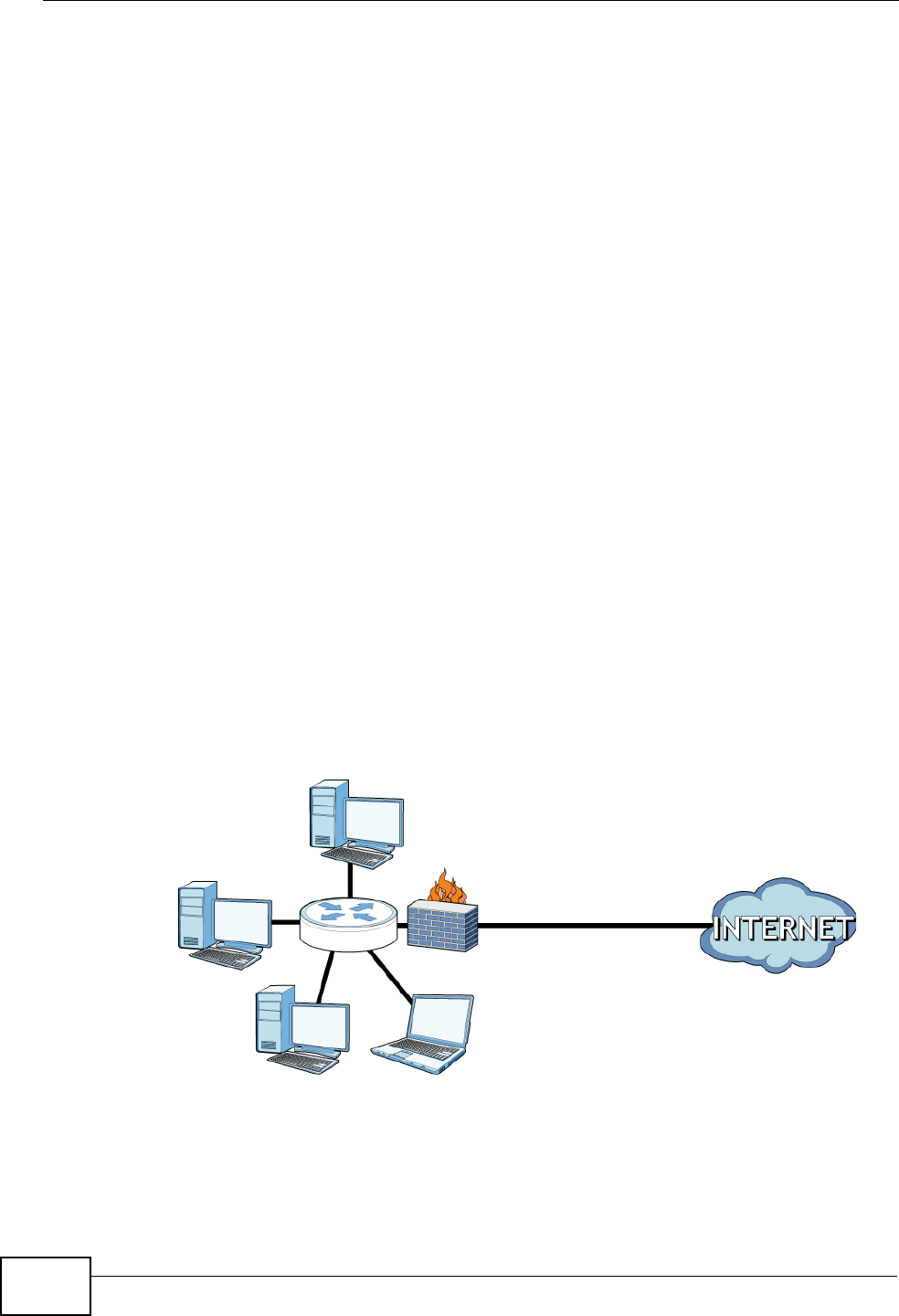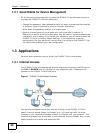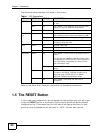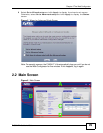
Chapter 1 Introduction
P-660H-T1v3s User’s Guide
22
1.2.1 Good Habits for Device Management
Do the following things regularly to make the P-660H-T1v3s more secure and to
manage the P-660H-T1v3s more effectively.
• Change the password. Use a password that’s not easy to guess and that consists
of different types of characters, such as numbers and letters.
• Write down the password and put it in a safe place.
• Back up the configuration (and make sure you know how to restore it).
Restoring an earlier working configuration may be useful if the device becomes
unstable or even crashes. If you forget your password, you will have to reset the
P-660H-T1v3s to its factory default settings. If you backed up an earlier
configuration file, you would not have to totally re-configure the P-660H-T1v3s.
You could simply restore your last configuration.
1.3 Applications
Here are some example uses for which the P-660H-T1v3s is well suited.
1.3.1 Internet Access
Your P-660H-T1v3s provides shared Internet access by connecting the DSL port to
the DSL or MODEM jack on a splitter or your telephone jack. Computers can
connect to the P-660H-T1v3s’s LAN ports.
Figure 1 P-660H-T1v3s’s Router Features
You can also configure firewall and content filtering on the P-660H-T1v3s for
secure Internet access. When the firewall is on, all incoming traffic from the
Internet to your network is blocked unless it is initiated from your network. This
means that probes from the outside to your network are not allowed, but you can
safely browse the Internet and download files.


















